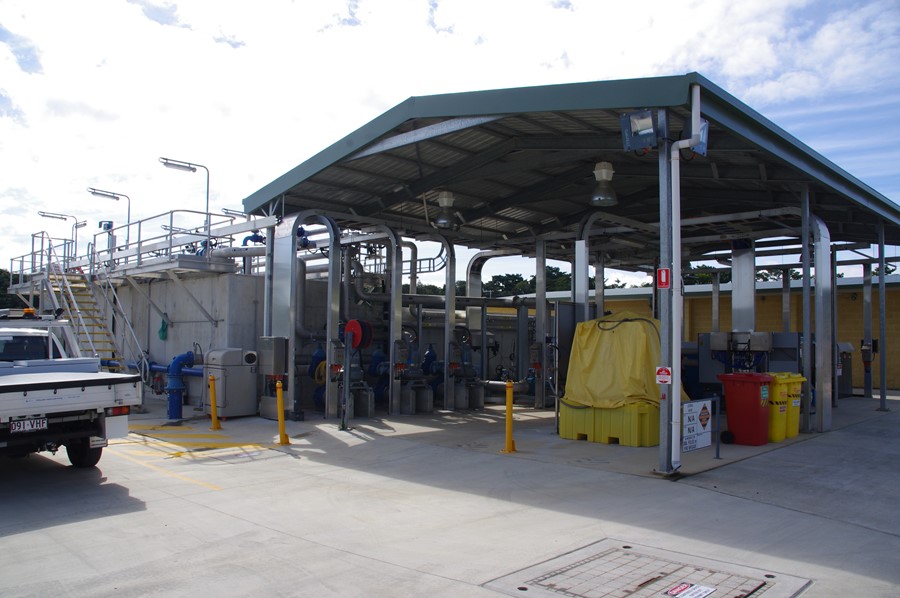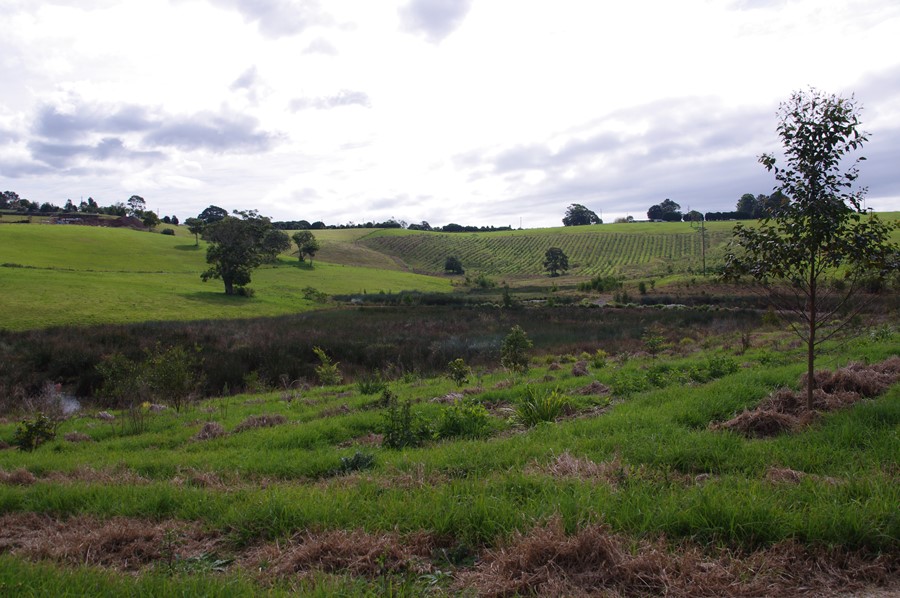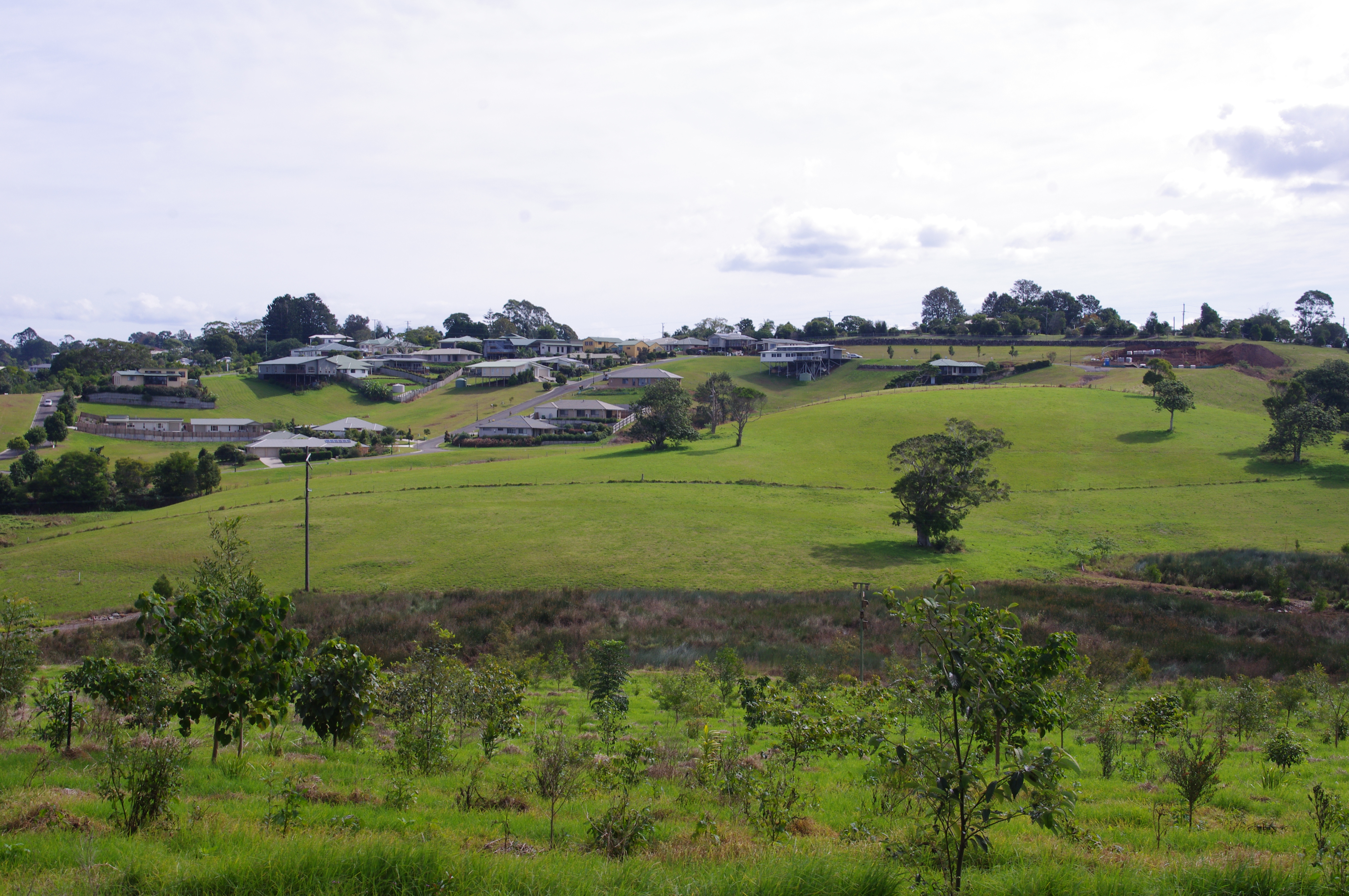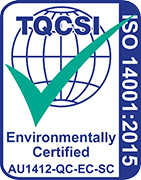Maleny Sewage Treatment Plant - Upgrade Disposal Forest & Tertiary Wetland
The Water & Carbon Group produced a detailed design for of a 13ha biodiversity effluent disposal forest, and a 3ha polishing wetland. The project provided multi-value outcomes beyond the core purpose of sustainable disposal, including environmental restoration and community walking tracks.
Project Summary
The Water & Carbon Group were awarded the contract to undertake specialist design work to construct a 13.8ha effluent disposal forest and a 3ha tertiary treatment wetland as part of a wider $17m upgrade to the Maleny Sewage Treatment Plant. The forest/wetland allowed Unitywater to achieve what is a leading best practice approach to managing the final effluent disposal from the sewage treatment plant. The ecological infrastructure delivered through the upgrade works not only provided a sustainable disposal pathway, but also created an opportunity to restore natural biodiversity into the landscape and create an exemplary community natural asset.
Maleny is a township of approximately 3500 people, located in the hinterland of the Sunshine Coast, 100km north of Brisbane. At an elevation of 450m, Maleny is renowned for its scenic views of the surrounding region and its strong community environmental values. In 2014, Unitywater completed an upgrade of the Maleny STP with a state-of-the-art facility designed to: • Improve treatment standards;
- Provide recycling water to the community; and
- Deliver environmentally sustainable protection to the Obi Obi Creek watercourse.
A parcel of rural land previously used for cattle grazing activities (now owned by the Sunshine Coast Council) was provided to Unitywater as a site to establish a sustainable forest/wetland disposal scheme as part of the overall STP upgrade.
13.8
3
ha.of tertiary treatment wetlands developed.
30
ha.local native rainforest tree species used in the project.
Project Summary
The Water & Carbon Group were awarded the contract to undertake specialist design work to construct a 13.8ha effluent disposal forest and a 3ha tertiary treatment wetland as part of a wider $17m upgrade to the Maleny Sewage Treatment Plant. The forest/wetland allowed Unitywater to achieve what is a leading best practice approach to managing the final effluent disposal from the sewage treatment plant. The ecological infrastructure delivered through the upgrade works not only provided a sustainable disposal pathway, but also created an opportunity to restore natural biodiversity into the landscape and create an exemplary community natural asset.
Maleny is a township of approximately 3500 people, located in the hinterland of the Sunshine Coast, 100km north of Brisbane. At an elevation of 450m, Maleny is renowned for its scenic views of the surrounding region and its strong community environmental values. In 2014, Unitywater completed an upgrade of the Maleny STP with a state-of-the-art facility designed to: • Improve treatment standards;
- Provide recycling water to the community; and
- Deliver environmentally sustainable protection to the Obi Obi Creek watercourse.
A parcel of rural land previously used for cattle grazing activities (now owned by the Sunshine Coast Council) was provided to Unitywater as a site to establish a sustainable forest/wetland disposal scheme as part of the overall STP upgrade.
Solution
The Water & Carbon Group was engaged as specialists to design a forest/wetland effluent disposal scheme for the project. The scheme involved designing a sustainable irrigation system to disperse effluent over a 13.8ha area that was planted to become a native rainforest. The effluent supply from the sewage treatment plant (STP) 1.4km away, became a water resource that was used to restore the open landscape back into a native rainforest ecosystem. The ecological restoration utilised over 30 different local native rainforest tree species. As the trees mature, they will develop into a flourishing biodiverse habitat for local wildlife, whilst also creating a natural asset the community can enjoy.
In addition to the biodiversity forest, a 3ha constructed surface flow wetland was designed into the main drainage path discharging to Obi Obi Creek. This allowed for the treatment and naturalisation of runoff during wet weather periods.
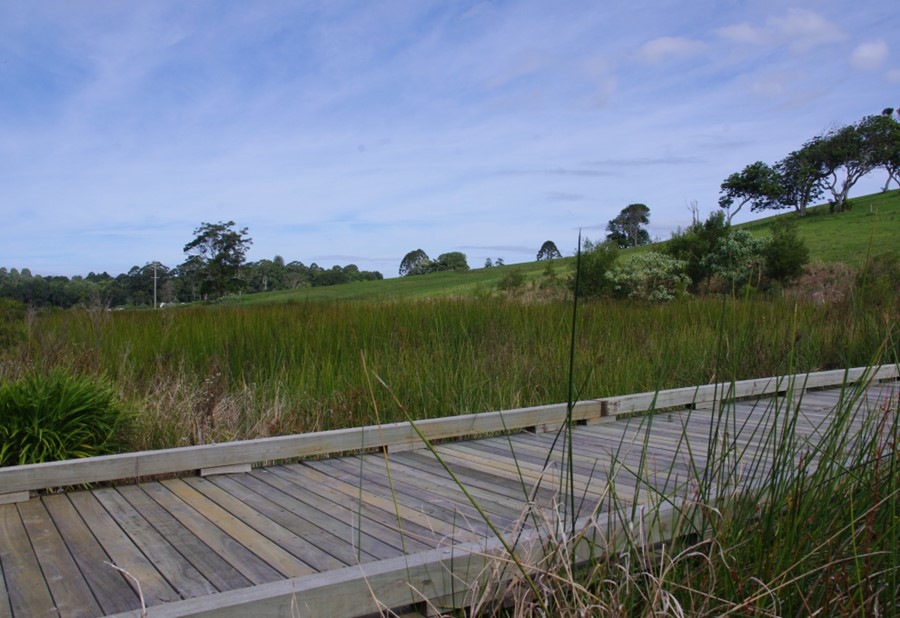
Outcomes
The forest disposal solution reduces the total volume discharged to Obi Obi Creek by 60%. After 2 years of establishment, the latest results (2015) from the wetland show Total Nitrogen concentrations of <1mg/L (far below most modern STP’s operating in the country). This project demonstrates the value of designing STP’s as integrated treatment and disposal solutions and the role that ecological infrastructure can play with modern STP’s.
13.8
haof effluent disposal forest constructed in the project.
3
ha.of tertiary treatment wetlands developed.
30
ha.local native rainforest tree species used in the project.

